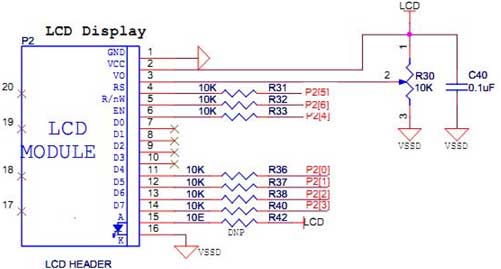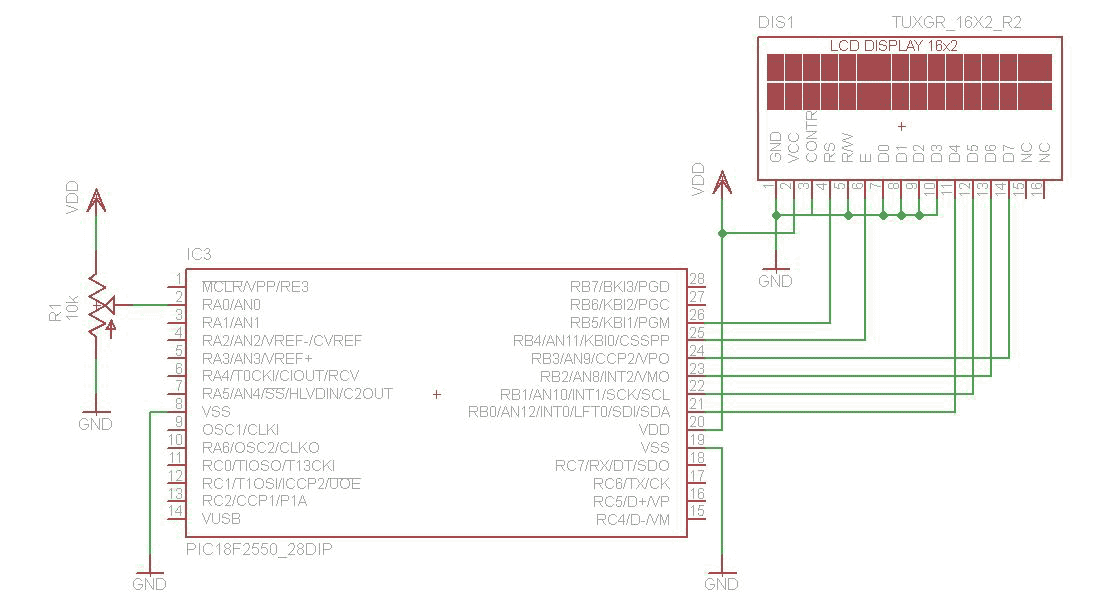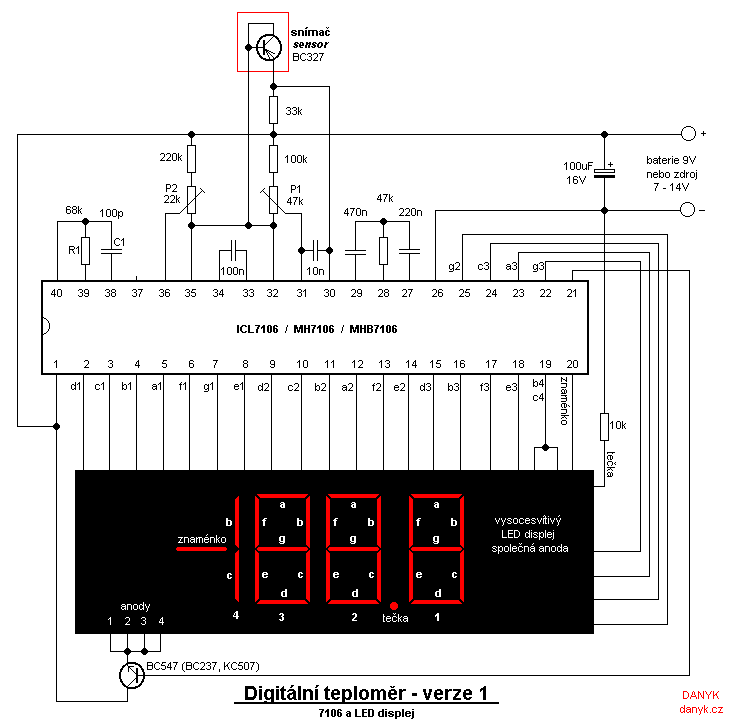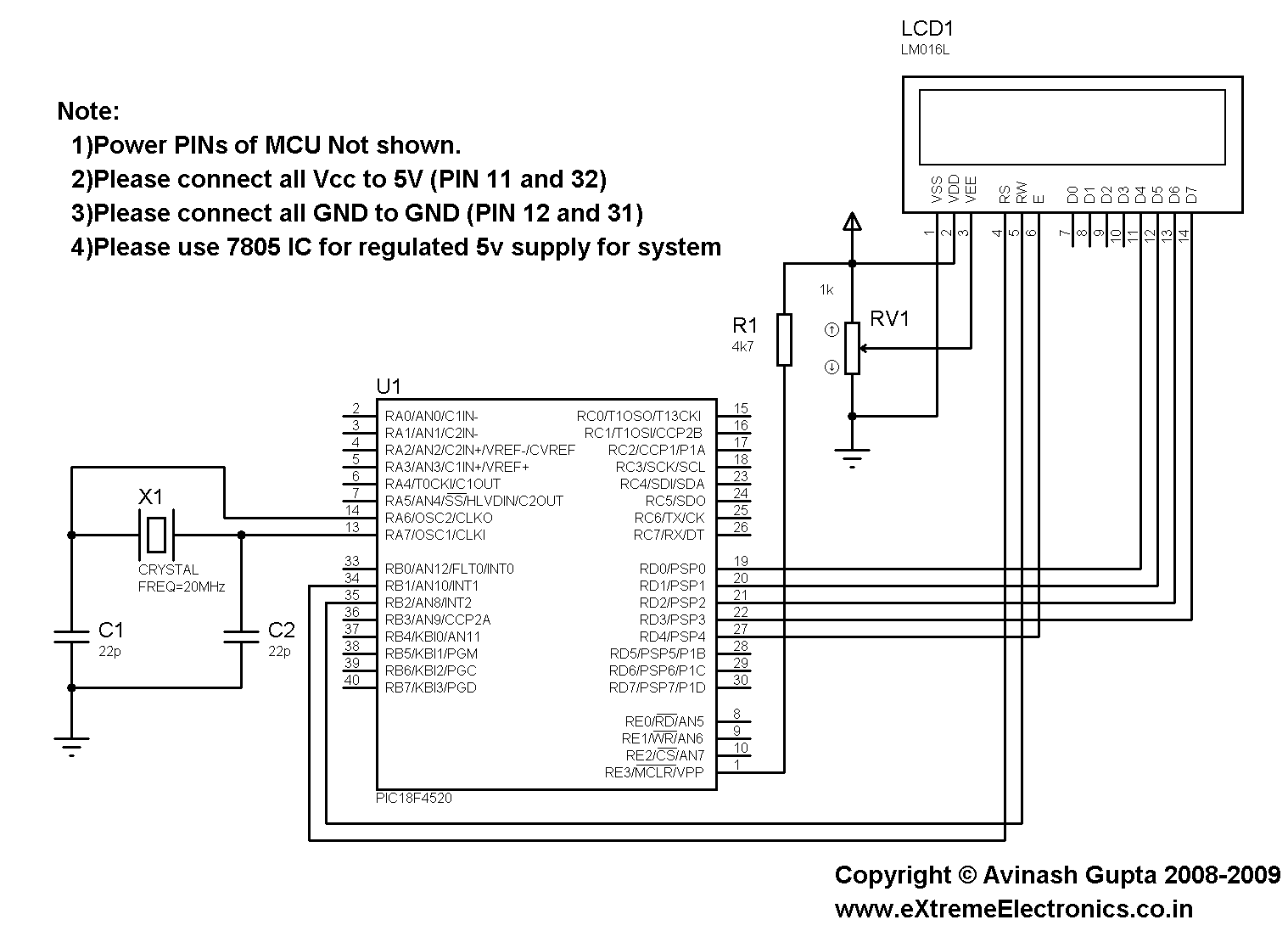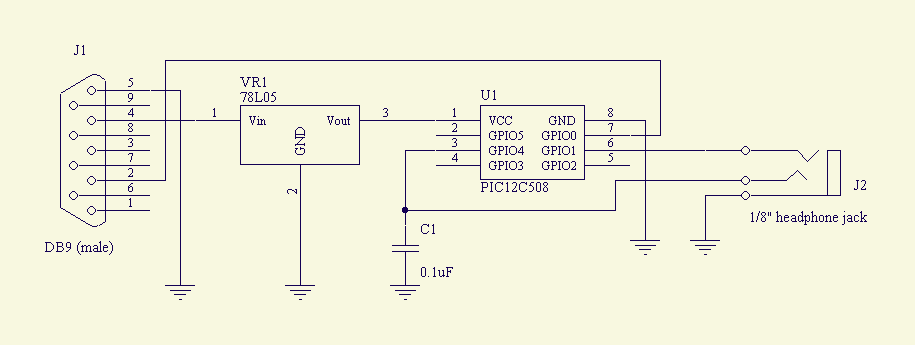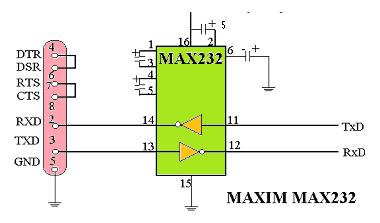
lcd interfacing
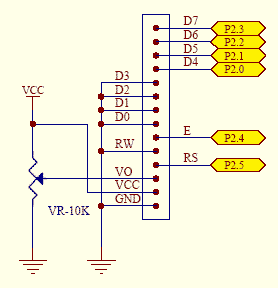
This document provides an example of how to interface with the standard Hitachi HD44780 LCD using an 8051 microcontroller and the SDCC C compiler. A standard 16-character by 2-line LCD module is utilized, as illustrated in the schematic below. The interfacing is accomplished using a 4-bit mode.
The Hitachi HD44780 LCD controller is widely used for displaying alphanumeric characters and is commonly interfaced with microcontrollers due to its simplicity and effectiveness. The 4-bit interfacing method allows for reduced pin usage, which is advantageous in microcontroller applications.
In this configuration, the 8051 microcontroller is connected to the LCD through a set of data and control lines. The data lines D4 to D7 are utilized for sending data in 4-bit mode, while the control lines include the Register Select (RS), Read/Write (R/W), and Enable (E) signals.
The RS line determines whether the data being sent is a command or character data. When RS is low, the microcontroller sends a command to the LCD. Conversely, when RS is high, character data is sent for display. The R/W line indicates the operation mode of the LCD; it is set low for writing data and high for reading data from the LCD. The Enable line is a strobe signal that triggers the LCD to read the data present on the data lines.
The initialization sequence for the HD44780 typically involves setting the display mode, clearing the display, and configuring the cursor. A typical sequence would involve sending a command to set the LCD to 4-bit mode, followed by commands to set the number of display lines and character font.
In conclusion, interfacing the Hitachi HD44780 LCD with the 8051 microcontroller using a 4-bit method is an efficient way to utilize the display capabilities of the LCD while conserving microcontroller I/O pins. The schematic represents the necessary connections and the sequence of operations required to achieve successful communication between the microcontroller and the LCD module.This is an example how to interface to the standard Hitachi-44780 LCD using an 8051 microcontroller and SDCC as C Compiler. I use a standard 16-character by 2-line LCD module, see schematic below. Here, I use 4-bit interfacing. 🔗 External reference
The Hitachi HD44780 LCD controller is widely used for displaying alphanumeric characters and is commonly interfaced with microcontrollers due to its simplicity and effectiveness. The 4-bit interfacing method allows for reduced pin usage, which is advantageous in microcontroller applications.
In this configuration, the 8051 microcontroller is connected to the LCD through a set of data and control lines. The data lines D4 to D7 are utilized for sending data in 4-bit mode, while the control lines include the Register Select (RS), Read/Write (R/W), and Enable (E) signals.
The RS line determines whether the data being sent is a command or character data. When RS is low, the microcontroller sends a command to the LCD. Conversely, when RS is high, character data is sent for display. The R/W line indicates the operation mode of the LCD; it is set low for writing data and high for reading data from the LCD. The Enable line is a strobe signal that triggers the LCD to read the data present on the data lines.
The initialization sequence for the HD44780 typically involves setting the display mode, clearing the display, and configuring the cursor. A typical sequence would involve sending a command to set the LCD to 4-bit mode, followed by commands to set the number of display lines and character font.
In conclusion, interfacing the Hitachi HD44780 LCD with the 8051 microcontroller using a 4-bit method is an efficient way to utilize the display capabilities of the LCD while conserving microcontroller I/O pins. The schematic represents the necessary connections and the sequence of operations required to achieve successful communication between the microcontroller and the LCD module.This is an example how to interface to the standard Hitachi-44780 LCD using an 8051 microcontroller and SDCC as C Compiler. I use a standard 16-character by 2-line LCD module, see schematic below. Here, I use 4-bit interfacing. 🔗 External reference
